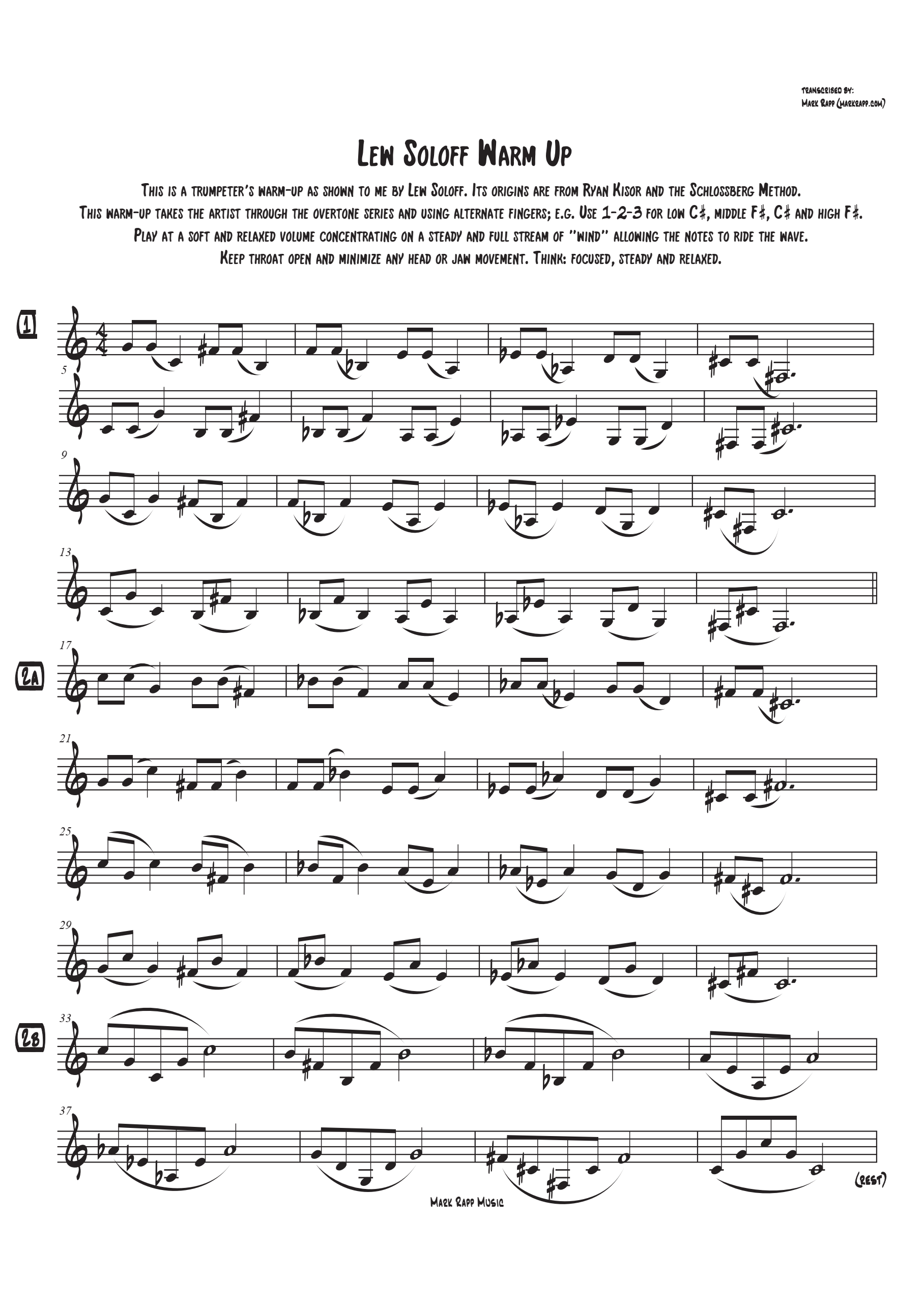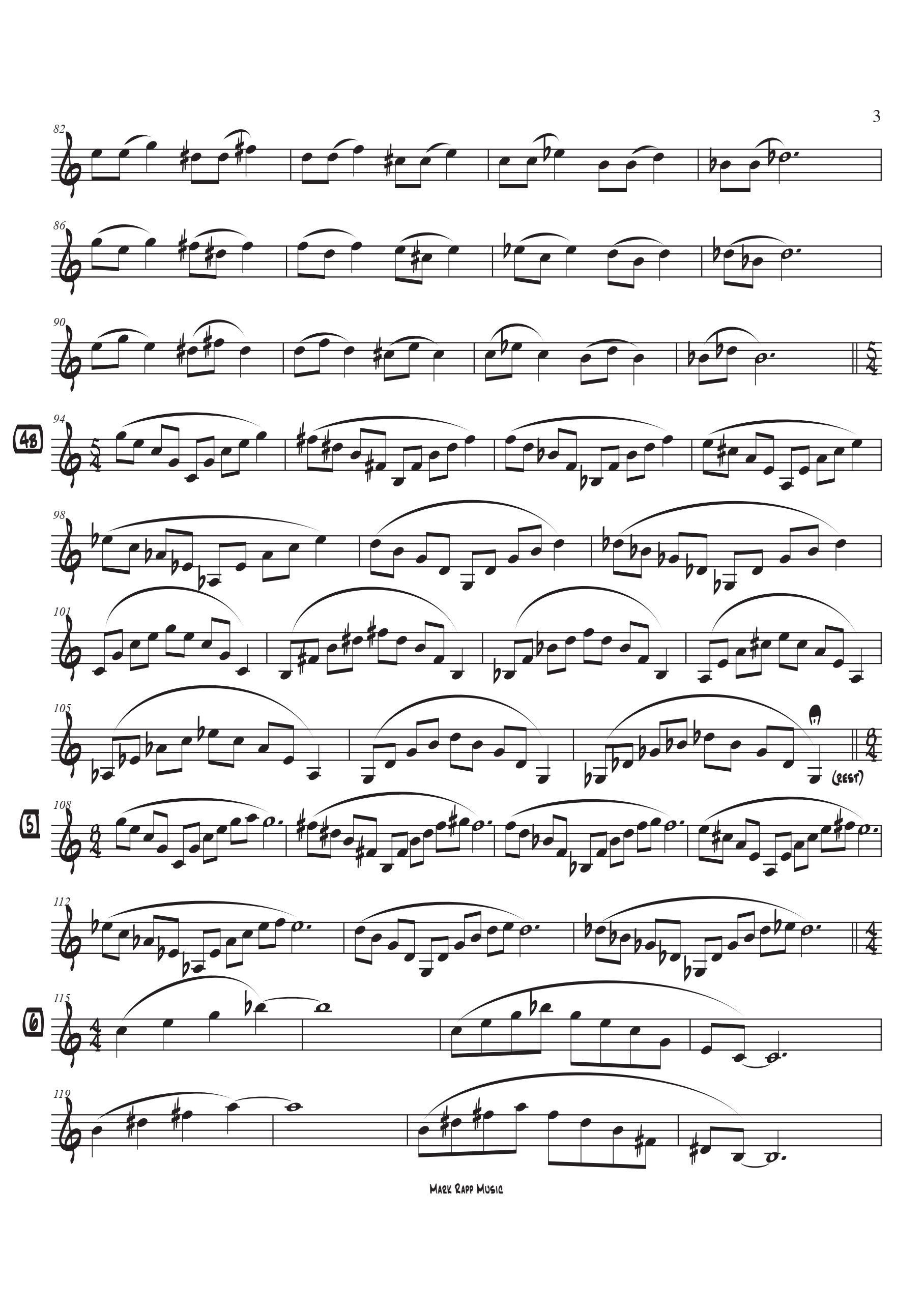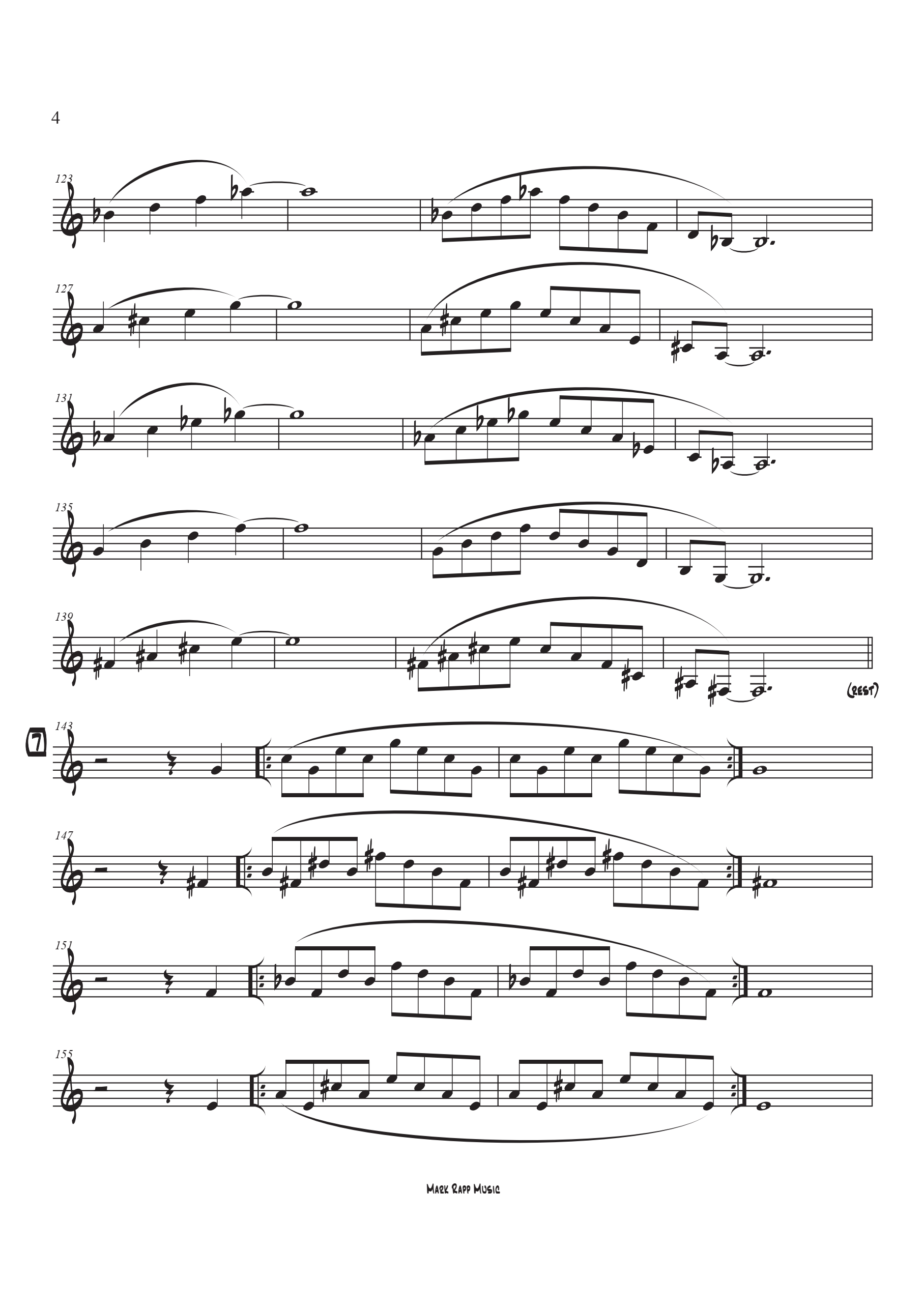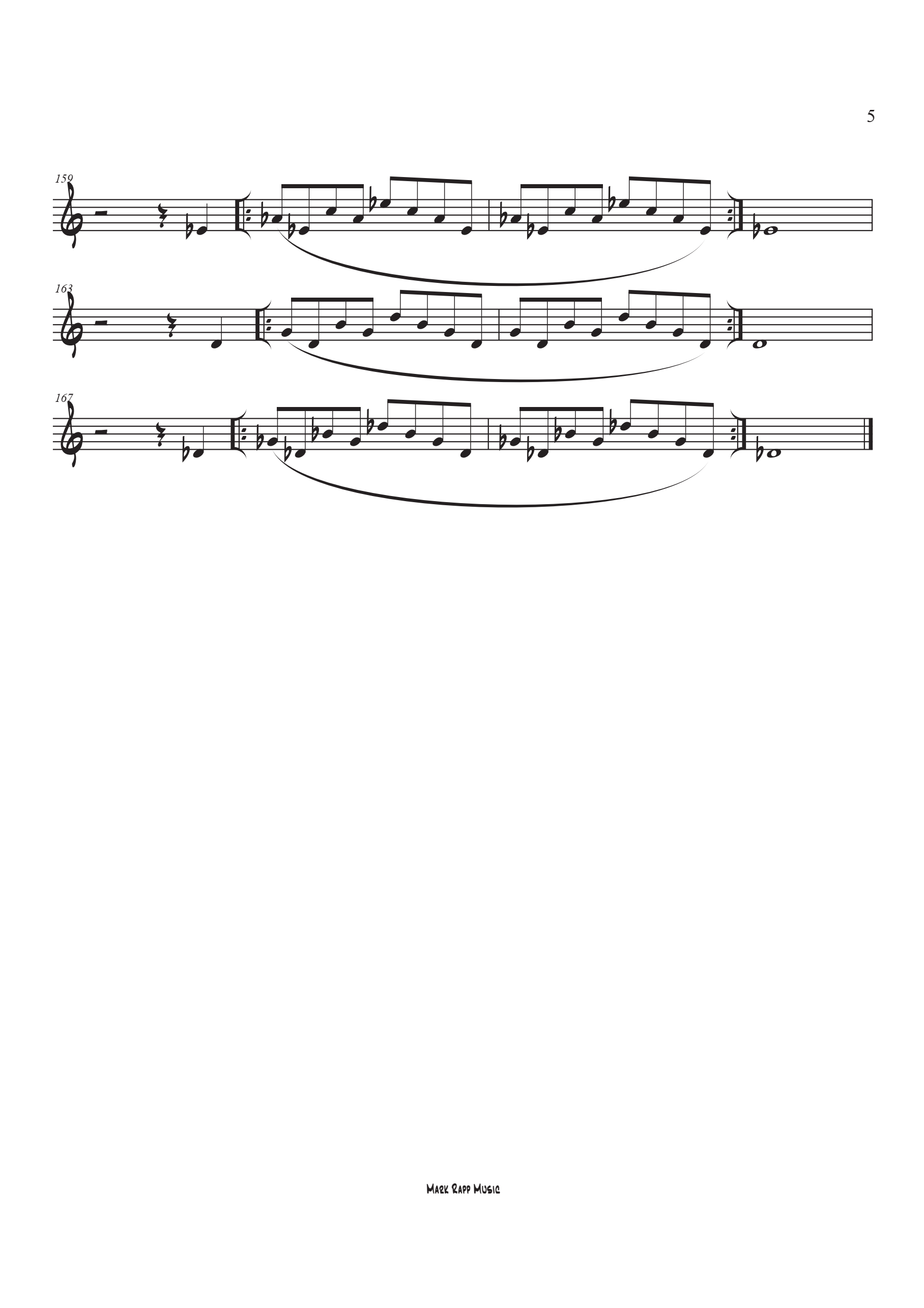Lew Soloff Warm Up
-





-
Lew Soloff Warm Up.
-
For me, a warm-up covers all the bases. Like this:
https://daveballou.com/wp-content/uploads/2017/02/AnIntegratedWarmup.pdf
-
@kehaulani I find I have to compromise on warmups. A method such as what you posted would take me … maybe 45 minutes to go through? It’s hard to estimate without counting out the bars but it’s a long commitment to be sure. After that, it’s doubtful if I’d have any juice left for the gig!
I try to do a structured diagnostic warmup before a long day of rehearsal or a gig, but still I find it hard to commit to more than 20 minutes at most.
-
@kehaulani Outstanding, thank you!
-
I think this was Lew's warm up and not his complete practice routine which are two different things. I'm guessing Lew also had his short warm up for long gig days. A very complete player.
-
@dbtrumpet Yeah I concur, it looks more like a warmup. My comment was more towards the warmup @Kehaulani posted, which I found too long to be practical.
-
Thanks, Dave, for posting this warmup routine. I've found it very valuable in several ways. It took me a few tries to figure out how to play it, and more to play it reasonably well. It's a nice little workout--even a routine you can run through when there's no real practice time.
Being a rank amateur, I should probably pick a horn and a mouthpiece and stick with it, but I love cycling through the horns in my signature. It used to take me a while to make the switch, but this exercise works as a "reset" for me. Even going to the baritone is easier.
I also owe you thanks for a post you made quite a while ago over on the oTHer site. You quoted a discussion about using a 3x5 card to determine your dominant lip. That led me to discover that I'm weird (in yet another way) in that my bottom lip is dominant. I can play a reasonable tone with a business card over my top lip, but the only thing I can get out with the bottom lip covered is a pedal tone.
What did I learn from that?
-
I believe I'm an upstream player with low MP placement. Moving the mouthpiece down a bit more allowed me to disable the double buzz I was getting at low C -- where my upper lip wanted to join in.
-
I'd always believed the accepted science that the top lip was dominant, so you should punish the lower lip when pressure was required. Doing that cut off my top range, making high C impossible other than early in the session.
-
The lower MP placement cleared up the tubbiness on low G and F#.
Using a bit of pressure on the top lip (in lieu of the bottom) helps with high range. Too bad my dog starts to whine when I get above high C. Otherwise, I could practice up there.

-
-
The Soloff is interesting and I particulaly like Kehaulani's offering, but honestly, for me these are practice routines and way too much for a warm-up.
I play with a demanding band in both gigs and practice sessions and I'd have nothing left if I used either of these two warm-ups, which is likely great for pro players...but I am no pro, just an amateur who stopped playing for money 50 something years ago.
George